
Nothing makes such an impact on your mind like a great book that comes out of nowhere to impress itself on your memory. And probably no book creates more of an unforgettable impression than a work of horror. To quote an author of some notoriety in the horror biz—”the oldest and strongest emotion of mankind is fear.” I dare say that every person that’s ever read a horror story or even a horror comic still remembers the first one that really scared them. That’s something that is not easily forgotten.
I still have very strong memories of a little book called The Shapes of Midnight that I picked up as a high schooler in the hallowed year of 1980. Most likely it was the garish but remarkable cover that drew me to this paperback…an image of a policeman being enveloped by a shiny dark blob of protoplasm, his face contorted in fear and highlighted by the flashlight beam of his partner, who recoils in horror from the sight. The image seems dated now, but still striking, especially in this day of very bland-looking horror paperbacks.
It certainly wasn’t the name of the author that drew me, because I had no idea who Mr. Joseph Payne Brennan was. But I soon found out. What a shame it is that so few know that name, for it belongs to a true American master of horror fiction who influenced many of those lucky enough to stumble upon his work. One of those so influenced was the young writer who wrote the introduction to the book, a young author who had just rocketed to stardom in the preceding few years. A gentleman known as Stephen King.
I’m sure King’s introduction was the final bit of inducement I needed to buy The Shapes of Midnight. I had just polished off King’s own terrific horror anthology Night Shift, which had given me a couple of sleepless nights and which I still believe to be one of his best works. King’s own powerful verbiage painted praise for an author who had scared him silly as a kid with his terror tales. Anybody that could scare the crap out of Stephen King was a guy I had to check out!
Joseph Payne Brennan was an incredibly prolific author who was especially fond of the horror genre, although by no means restricted to it. He wrote continuously from 1940 right up until his death in 1990 and his works were published in the likes of Weird Tales, Alfred Hitchcock’s Mystery Magazine, and many more. Short stories were his stock in trade…he only had two true novels to his credit. He was also a poet and won awards for his verse.
But the short horror story was his bread and butter. Many of Brennan’s stories appeared in anthologies over the years, but none more than his classic story “Slime”, which also appears in Shapes of Midnight. This grisly tale of a carnivorous blob from the ocean floor that preys upon the residents of a coastal town has appeared in more than fifty separate collections! Brennan sued the makers of the ‘50s flick The Blob for plagiarism and received a settlement due to the resemblance of the Blob to his Slime creature.
Brennan was a master of what King astutely called “the plain style.” That means his prose was direct and unadorned. When compared to horror authors like H.P. Lovecraft and Clark Ashton Smith, his writing seemed bare-bones, but this was part of its strength. Just about anybody could pick up a Brennan tale and read it easily. This differed from the fifty cent words and deliberately ornate style used by most of the Weird Tales crew. Does this mean Brennan lacked the vocabulary of his peers? Not at all, he just preferred a more straightforward style. He could paint pictures when he had to and his skill in creating a feeling of place in his stories was palpable. There was also a dry sense of humor to some of his tales, but it never appeared in inappropriate spots.
The Shapes of Midnight was an anthology of Brennan short stories that captured him at his best and most diverse. Eleven stories were included. Six of them I would rank as unforgettable and the best of these I consider the most frightening story I have ever read. Of the rest, only two are rather average and even they showcase Brennan’s talent.
Now let me escort you into the dark corridors of Joseph Payne Brennan’s imagination…
The first story, “Diary of a Werewolf” grabbed my attention right off the bat. The story is exactly what the title indicates…the macabre diary entries of a man who finds himself afflicted by the curse of lycanthropy. It’s unique in two ways. It’s a first-person recollection by a monster and the monster grows to love his murderous curse. Brennan’s storytelling is chilling as the “hero” gradually not only becomes used to his bloody rampages but revels in them. You feel the same pleasure he does as he hunts down helpless humans, rips their flesh and drinks their blood. This cruel beast spares no one, neither women nor children.
“Diary of a Werewolf” is a grisly little tale, but that’s just a warm up for the next story, “The Corpse of Charlie Rull”. Here Brennan lets his taste for gruesome gore run wild, as he tells the almost ridiculously simple tale of a radioactive zombie. Charlie Rull is a drunken tramp who drops dead of a heart attack in the middle of a lonely swamp. But this same swamp is where illegal radioactive waste is dumped. The waste impregnates Charlie’s bloated corpse with hideous energy, causing it to lurch to life as an engine of destruction. The rotten corpse, which Brennan describes as having the pallor of a dead fish’s belly, roams the countryside, tearing everything in its path limb for limb. In a wicked touch, one of the people the zombie encounters is a serial killer who has just finished his own dirty deed.
This is real EC Comics-stuff and Brennan lays on the red sauce nice and thick. In one scene, Charlie’s corpse stumbles into a barn and rips some unfortunate horses apart. We are told that the radioactivity has filled the corpse with agonizing energy that it must expend with violence. Needless to say, the local populace learns of the monster in its midst and plans to defend itself with maximum violence. “The Corpse of Charlie Rull” is plain red-meat horror at its repulsive best.
A whole book of stories like this would have been real entertaining, but Brennan is a better writer than that. With “Canavan’s Back Yard”, he does a complete 180 and creates a masterful tale relying much more on atmospherics and suggestion. It’s a classic story of a “bad place”…a location that is evil and unhealthy. There have been several such stories, including Clark Ashton Smith’s “Genius Loci”, but “Canavan’s Backyard” ranks with any of them. It creates a subtle menace that grows and builds until sweat begins to run down the back of your neck.
The story is simple. Our narrator makes his way to a quaint antiquarian bookstore in an offbeat part of town to visit the eccentric owner, a friend of long standing. There he finds his friend, Mr. Canavan, in an uneasy frame of mind. Something is preying on his nerves, but he’s not sure what. It seems to be related to his backyard…an unkempt, dreary plot of land marked by weeds and dead trees. Something in that backyard is just not right. The perspective seems wrong. Canavan finds himself staring into it for hours…it seems like the weedy patch actually runs for miles and miles.
With each successive visit, our storyteller finds Canavan’s mental state deteriorating further, until he finally disappears. The protagonist heads into that wretched backyard to find him…and finds his own sanity under attack. “Canavan’s Backyard” is a sensational tale of subtle yet cosmic horror. I’m not sure if the explanation offered at the end is satisfactory. It might have been better to leave everything a colossal mystery.
“The Pavilion” is a chilling little story of murder and revenge that could have easily been made into an episode of the old Alfred Hitchcock TV show. There’s no radioactive zombie or protoplasmic horror here, the menace is strictly human. But the gruesomely ironic fate of the killer is something that will linger in your memory. Once again, Brennan’s ability to summon up the dark qualities of a place—in this case, an abandoned seaside pavilion during winter—is uncanny.
“House of Memory” is frankly one of the lesser tales in the anthology. Not really a horror story at all, it’s more of a wistful look at how the past holds us in its grip. The Richard Matheson story “Young Man’s Fancy”, made into a Twilight Zone episode, is similar in tone. It’s not a bad story; it just doesn’t seem to fit with the rest of the book.
“Disappearance” is another bleak and macabre murder story in the vein of “The Pavilion”. Two policemen are investigating the vanishing of a local man and they pay a visit to the remote farm of his brother, who was known to have issues with the missing man. The police try to crack the suspect’s resolve but are unable to do so. Later, though, they learn the answer was staring them in the face all the time…
“The Willow Platform” is something of a whimsical tale and a look at the fictional locale of Juniper Hill, a small New England town where many of Brennan’s stories are set. “The Diary of a Werewolf”, “The Impulse to Kill” and “The Corpse of Charlie Rull” are other stories set in Juniper Hill. Unlike Lovecraft’s towns of Dunwich and Arkham, Juniper Hill seems to be fairly normal and populated with mostly average people. It just seems to be a magnet for werewolves, zombies, serial killers…and men like Henry Crotell, the backwoods hermit who is building an odd platform made out of willow wood at his isolated shack. Our protagonist, a writer from the big city, becomes interested in what Henry is up to. He makes an acquaintance with the rather amiable but also subtly sinister old man and learns that he fancies himself a warlock. He’s just come into possession of an ancient book and he’s using instructions in the book to build that willow platform so he can call down SOMETHING from above to give him the power he’s always craved.
It’s a Lovecraftian story of man meddling with cosmic beings from the unknown but what sets Brennan’s vision apart is his more light-hearted vision of Crotell and the good country folk of Juniper Hill. You get the impression Brennan likes these people, even Henry, instead of considering them degenerate bumpkins as Lovecraft would have. But when the story reaches its climax, you will still shudder when you see exactly what Henry Crotell has gotten himself into.
“Who Was He?” is a brief but effective mystery about a series of mysterious deaths at a hospital. The victims are all people recovering from heart attacks who have been apparently scared to death while in their hospital room. Investigation reveals that they were all visited by a strange man who claimed to be the hospital barber, a man with a moustache and a strangely “frozen” face. Who this man really is and why he does what he does is the core of the mystery here. Incidentally, I can’t quite remember if this tale features Brennan’s famous “psychic” detective Lucius Leffing in action. Leffing was an investigator of paranormal mysteries that was the author’s most famous and successful recurring character. If so, this was probably one of the lesser stories featuring Leffing.
The next story in the anthology was anything but lesser. Simply put, it is the single scariest short story I have ever read and one of the very, VERY few that kept me up at night. This is “The Horror at Chilton Castle” and if there is one Brennan story you should read to experience his brand of terror at its best, this is the one. It is also the most “classical” story, featuring ancient castles, dark and stormy nights, dreary dungeons and horrible family secrets.
The hero of the story seems to be Joseph Payne Brennan himself, who has journeyed to Scotland in search of his family roots. This has taken him to an inn near a huge forbidding fortress known as Chilton Castle…the ancestral home of the Payne family. At the inn, Brennan encounters a stern old man who is the factor of Chilton Castle. The factor, William Cowath, tells him that the 12th Earl of Chilton has recently died and now the 13th Earl must take his place. But before he takes the reins, he must visit a secret room hidden deep in the castle and confront something terrible in that room…something that has given all previous Earls of the castle prematurely white hair and ensured an early death. Nobody who has gone into that room has emerged the same. Since Brennan is a relative of the Payne family, he has earned the right to accompany Cowath and the 13th Earl there. The factor feels the 13th Earl is weak and fearful and will need all the help he can get to make it through the mysterious ordeal.
Being not unfamiliar with the strange and bizarre, Brennan agrees to accompany Cowath to the castle on a night full of howling wind and rain. Frederick, the 13th Earl, is indeed a nervous wreck and the factor is as grim as only an old Scotsman can be. Together, the three travel into the bowels of the old castle, until they reach the hidden dungeon. What they find within that room causes Frederick to lose his sanity and Brennan to flee the country the next day, never to return. What is in the dungeon? I won’t tell you, but it’s something that had me sweating bullets. Not only is WHAT lurks in the dungeon horrible, but how that THING relates to the line of the Payne family is even more so. This is a primal horror story that will haunt the dreams of anybody who has a single nerve in their body! It alone makes The Shapes of Midnight an essential purchase.
The book could have ended right there and been very satisfying but there are a few more terror tales to go. “The Impulse to Kill” takes us back across the sea to Juniper Hill and provides us with a story quite similar in style to the earlier “Diary of a Werewolf”. The difference in this case is that where the werewolf was a supernatural beast, the narrator of this story is purely a human being. But he is no less evil. This fiendish serial killer enjoys recording his murders for posterity and he disguises himself as the most normal and respectable member of society. In many ways, this makes this story more chilling than the earlier werewolf story because it is all too plausible. And unlike “Diary of a Werewolf”, this psycho seems to get away with his crimes!
“The House on Hazel Street” is the dud of the anthology, proving that even Brennan could stumble once in a while. Well, so did Lovecraft and King. To tell the truth, I remember ZERO about this story, not even the general set up. But the inclusion of one forgettable tale only makes the tiniest dent in The Shapes of Midnight and the book recovers by finishing off with the author’s most famous fear tale.
That would be “Slime”, which we touched on briefly above. This is the longest of the stories here, approaching “novella” status. It’s easy to see why this is Brennan’s most famous story, because the monster is so unique and the narrative is so intensely focused. The story actually begins from the point of view of the “slime” itself…we learn that this ancient, mindless being has prowled the uttermost abyss of the ocean for millennia, feeding upon whatever hapless denizens of the deep it stumbled upon. It was the ultimate predator in its world. But a tremendous undersea upheaval, combined with a raging hurricane, has thrown it into a new and unknown world…the world of the surface. Our world.
The Slime finds its way into a fetid swamp near a coastal town, where it hides during the light of day—something it has never experienced before—and oozes forth at night to prey on the creatures it finds, including even alligators. But when this protoplasmic horror turns its hunger towards human beings, then it becomes the prey, as the citizens of the town, led by their courageous police, decide to destroy this hideous beast of the abyss.
This story moves like a rocket and Brennan is a magician at creating the fearful atmosphere of a dreary southern swamp at night, one haunted by an indescribable terror. The Slime has a distant relative in Lovecraft’s shoggoths, but whereas the shoggoths were the spawn of an elder race, the Slime is pure animal hunger unleashed. It’s up to you to determine which would be scarier.
The impact this book made on me was such that I’ve hung on to it for 34 years, through various moves, as many other favorite books fell by the wayside. It’s such a great and simple horror anthology, truly reaching the reader on the primal level. And unlike so many horror anthologies I’ve read in the last couple of decades, there’s no emphasis on twisted sex, mindless cruelty and perversity. Brennan’s horror doesn’t need those things to be effective. Why so many modern authors feel they do is a mystery to me.
You won’t find The Shapes of Midnight easily anymore. You can ferret it out online for a prohibitive price, but if you prowl enough used bookstores and garage sales, you might come across it for far less. Don’t let it pass you by! If you’re lucky enough to find it, you may regret it, because your nights might just be filled with visions of shapeless black horrors, radioactive zombies and most of all, the THING chained deep in a Scottish dungeon…
2 thoughts on “The Shapes of Midnight: The Scariest Horror Anthology You’ve Never Heard Of”
Comments are closed.


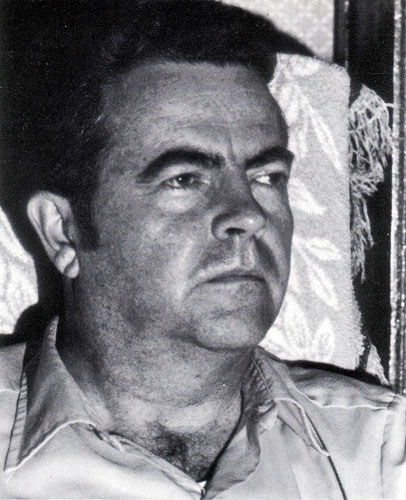
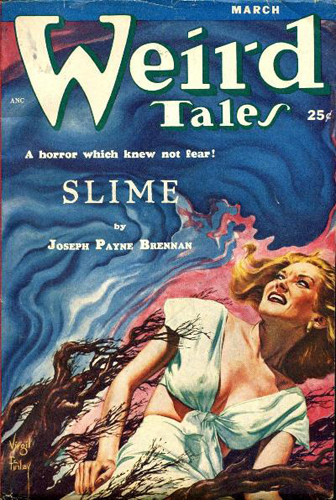
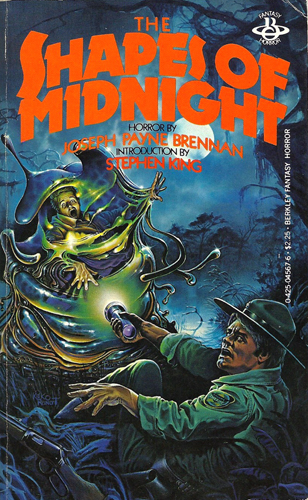
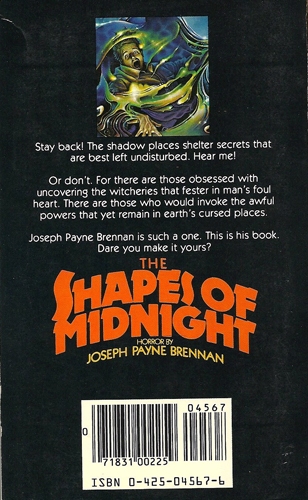
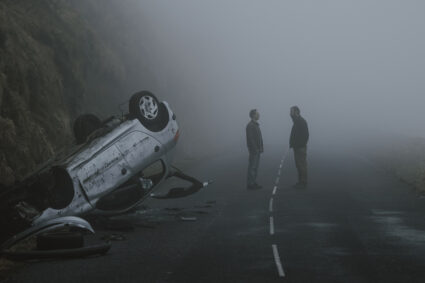
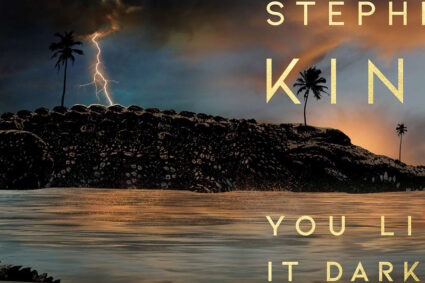
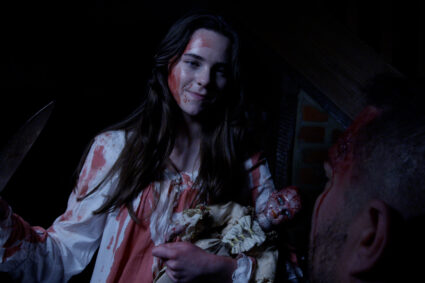










Wow, Doc – why have you been keeping this a secret for so long??? I can’t wait to get my hands n this book! Thanks!
~SG
I only learned of Joseph Brennan this week, after reading one of his stories (“Canavan’s Backyard”) in a horror anthology. I really enjoyed it, and thought I’d seek out more of his work. Your recommendation makes me want to grab this collection. Alas, there were none available on eBay, and the ones on Amazon are indeed pricey.
However, it looks like the book will be reissued by Dover Publications in July of 2019.